Let’s not waste time. Here are the most common protection methods…
Comparing Protection Methods
| Protection Method | Security Level | How Hard to Set Up | Impact on User Experience | Cost |
|---|---|---|---|---|
| Password Protection | Medium | Easy | Some hassle | Low |
| Download Limits | Medium | Easy | Minimal | Low-Medium |
| Secure Links | Medium | Moderate | Minimal | Low-Medium |
| Login Requirements | Medium-High | Moderate | Some hassle | Medium |
| Watermarking | Medium | Easy | Minimal | Low |
| License Keys | High | Difficult | Significant | Medium-High |
| DRM | Very High | Very Difficult | Major hassle | High |
| IP Restrictions | Medium | Moderate | Some hassle | Medium |
Different protection methods offer varying levels of security, complexity, and customer impact. You can also combine several complementary methods rather than relying on just one technique.
Consider both what you can manage and what your customers will accept when choosing protection strategies.
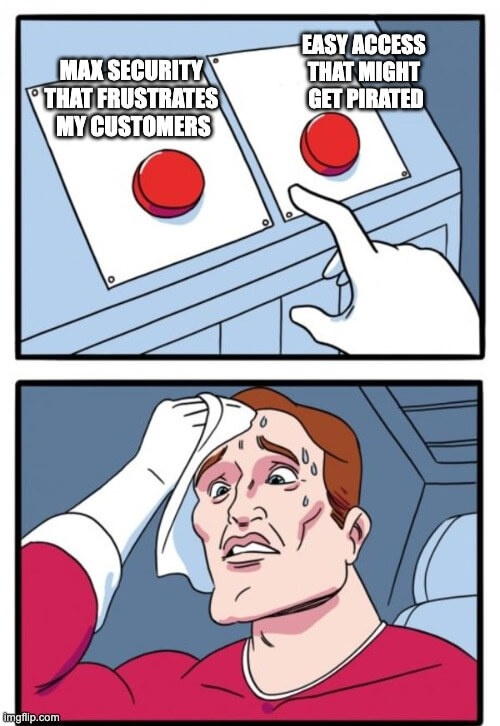
–
Next we take a look at…
Decision Tree: Choosing WHAT Digital Products Need WHICH Protection Methods
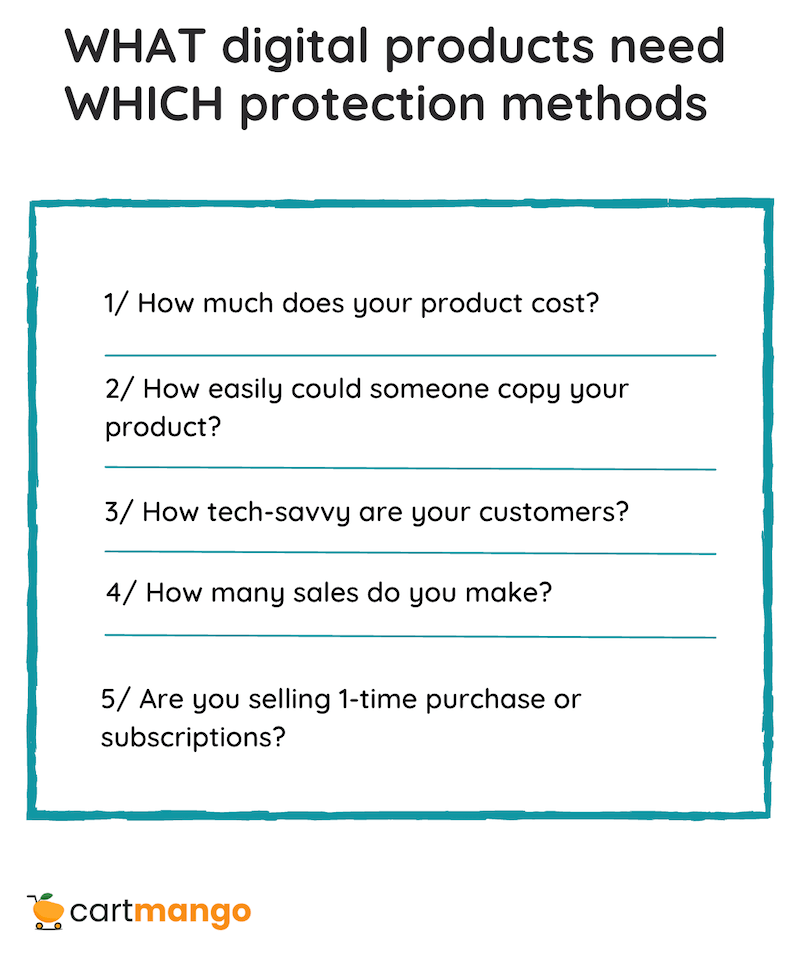
Use these questions to guide you:
How much does your product cost?
More expensive products usually need stronger protection
Cheaper items might only need basic measures
How easily could someone copy your product?
Software and courses typically need stronger protection
Simple PDFs might need less intensive protection
How tech-savvy are your customers?
Tech-savvy people might find ways around complex protection
Non-technical users might struggle with even basic protection
How many sales do you make?
Low volume (under 100 sales monthly): Basic login protection is usually enough
Medium volume (100-1000 sales): Consider watermarking
High volume (1000+ sales): More comprehensive approaches including licensing systems might be worth it
Are you selling one-time purchases or subscriptions?
Subscriptions work well with login-based protection
One-time purchases might use download limits, secure links, or login-based protection too
For most creators, using 1 protection method is good enough without making things too complex. Start with the simplest options and add stronger measures only if you need them.
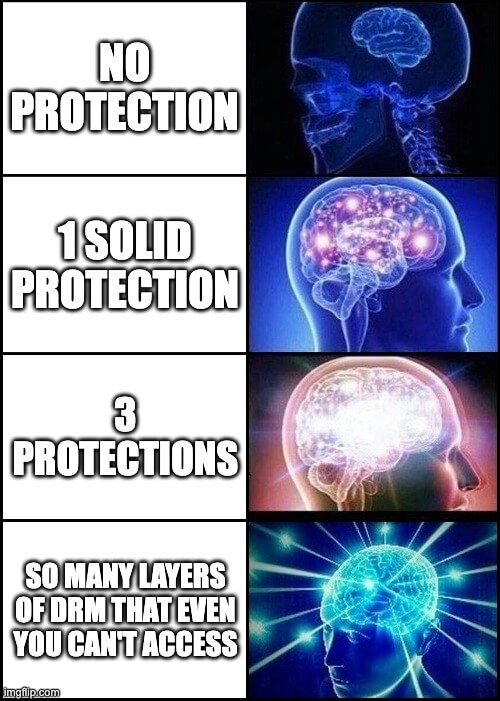
–
And Now Here’s The Usual Boring Intro…
Digital products/downloads like ebooks, courses, templates, and software is important. Without good protection, people can share your stuff for free, which means less money for you.
In this guide, we’ll look at simple ways to keep your digital products safe. You’ll discover how to protect your work while making it easy for your customers to access what they’ve bought.
–
Why Protecting Your Digital Downloads Matters
The digital product market is growing fast.
–
U.S. publishers lose approximately $300 million annually due to eBook piracy.
Source: PR Newswire
–
When people steal videos online instead of paying for them, businesses in America lose about $29.2 billion every year.
Source: U.S. Chamber of Commerce
–
Telegram Piracy in India (2024)
Entire video courses were distributed in Telegram groups with tens of thousands of members, highlighting the scale of organized piracy.
Source: VdoCipher
–
These cost businesses billions of dollars every year. For small creators like us, even a little bit of piracy can really hurt our income.
When your digital products aren’t protected, they can be easily copied and shared. Someone might buy your product once and then share it with hundreds of other people. That’s why you need good protection—it’s not just a nice-to-have, it’s necessary for your business to survive.
–
Understanding Digital Product Security
Types of Digital Products That Need Protection
Different digital products face different security problems:
Ebooks and PDFs: People can easily share these through email or messaging apps
Online courses: Someone might download your videos and share them elsewhere
Software applications: People might try to crack your software to avoid paying
Templates and design assets: Often shared in Facebook groups or forums without permission
Audio and video files: Frequently copied and shared on various websites
Each type of product needs specific protection. What works for a PDF might not work for a course or software program.
Common Security Threats to Digital Products
Digital piracy happens in many ways.
Here are some common threats:
People uploading your products to file-sharing websites
Customers sharing files with friends or coworkers
People sharing login details for membership sites
Using special tools to get around your protection
Taking screenshots or recording screens to capture your content
Many creators don’t worry about these risks until they find their $97 course being given away for free.By then, it’s too late to prevent the damage.
Balancing Security with User Experience
The perfect protection would keep your products 100% safe while being completely invisible to paying customers. In real life, that’s impossible (and hard) to achieve.
Too little protection leaves your products open to theft.
Too much makes things frustrating for customers who actually paid.
Your goal should be finding the right balance—enough protection to discourage sharing without making life difficult for your real customers.
–
6 Methods to Protect Digital Downloads
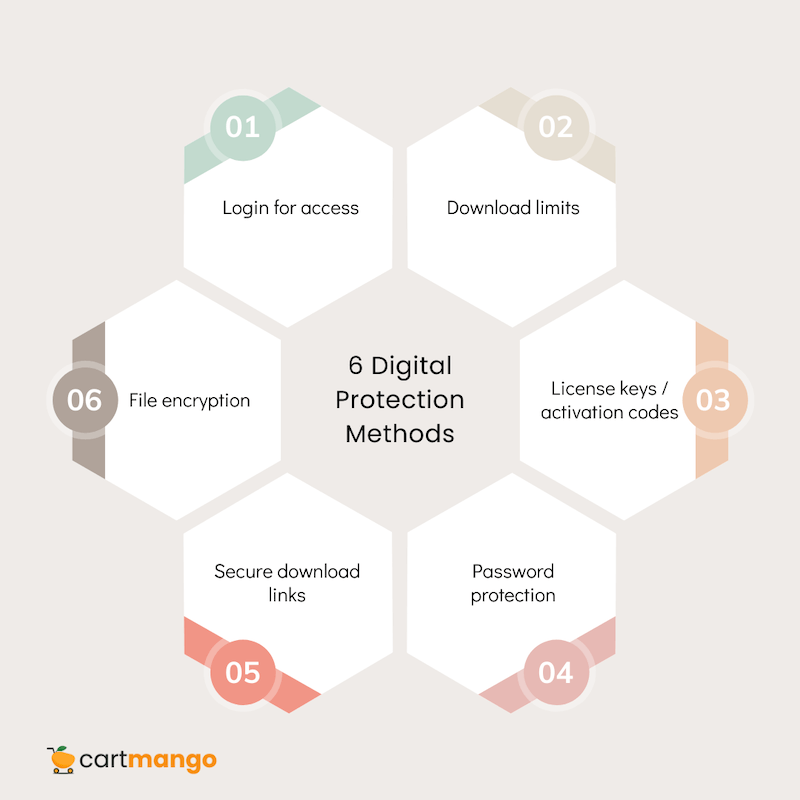
1/ Require Login for Access
Before choosing where to host your protected downloads, understand why platform security differences matter when selling digital products online.
One of the best ways to protect your products is to make users create accounts and log in before they can access what they bought.
This approach has several benefits:
It creates accountability by connecting downloads to specific people
You can see who’s accessing your stuff and when
It makes sharing harder because people would have to share their login details
You can block access if you spot suspicious activity
Platforms like CartMango already has this anti-piracy feature built-in.
2/ Implement Download Limits
Limiting how many times someone can download a file helps prevent sharing while still being fair to legitimate customers.
Setting reasonable limits (usually 3-5 downloads per purchase) lets customers download to multiple devices while discouraging sharing. You can also make download links expire after 24-72 hours for extra security.
3/ Utilize License Keys and Activation Codes
For software and premium digital products, license keys provide strong protection. Each purchase gets a unique code that must be entered before the product can be used.
This system lets you:
Track who’s using your product
Limit how many times each key can be used
Disable licenses that show suspicious activity
Verify legitimate purchases when people ask for support
Tools like LicenseSpring can help you set this up. Even for non-software products, activation codes can help control who can access your downloadable content.
4/ Password Protection
Password protection is a simple but effective way to secure your digital files. Basic password protection works well for PDFs, ZIP files, and many other file types.
For team or company purchases, you might want to use role-based access control (RBAC). This limits which team members can access specific resources based on their job roles.
When using passwords, avoid common ones like “password123” and use strong password requirements. You can set up systems to automatically generate and send unique passwords when someone makes a purchase.
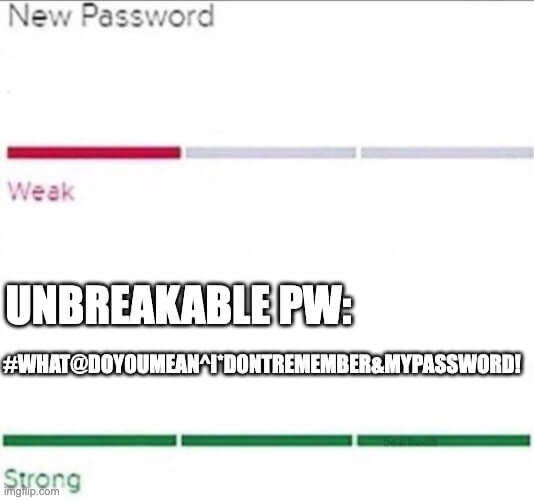
5/ Secure Download Links
Creating secure, time-limited download links helps prevent unauthorized sharing.
These links contain encrypted information that checks if the user has the right to access the file.
Several techniques make links more secure:
Using tokens to validate download requests
Checking permissions on the server side
Creating random URLs that can’t be easily guessed
Making links expire automatically after use or a certain time period
Amazon S3 with signed URLs offer good protection by creating temporary access credentials for each download request.
6/ File Encryption and Protection
Encrypting your files adds significant security against unauthorized access. Protected PDFs can prevent copying, printing, or editing without proper credentials.
Digital watermarking puts invisible identifiers in files that can trace leaked copies back to their source. For text-based products, you can insert the buyer’s name and email address throughout the document to discourage sharing.
Tools like Adobe Acrobat, Soda, and Locklizard provide various options for securing document files. While no protection is perfect, these measures create barriers to casual copying.
–
DIY Technical Techniques
If you like techy stuff, you can try the DIY methods below…
Hiding Products from Search Engines
Preventing your downloadable files from appearing in search results blocks one way people might find and access them without permission.
You can create a “robots.txt” file that tells search engines which folders they shouldn’t look at. This is like putting up a “do not enter” sign for Google and other search engines.
You should also protect your folders against “directory browsing,” which stops people from seeing lists of all your files. On many web servers, you can do this using .htaccess files with a simple command like “Options -Indexes”.
Secure Hosting Configurations
How you set up your web server plays a big part in keeping your files safe.
With the right settings, you can prevent many common ways people try to access files they shouldn’t.
You can use .htaccess files to:
Only allow certain IP addresses to access your files
Block suspicious users
Stop other websites from directly linking to your files (called “hotlinking”)
Make sure files open correctly
–
Balancing Digital Content Protection and Customer Experience
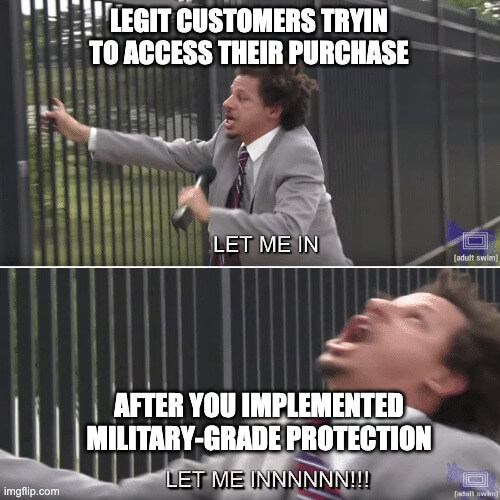
Going overboard with protection can actually hurt your business by frustrating your paying customers.
When customers struggle to access what they’ve bought, they’re more likely to ask for refunds and leave bad reviews. This can damage your reputation and hurt future sales.
Here are signs that your protection might be too strict:
Making customers log in multiple times
Complicated installation procedures
Requiring verification too frequently
Technical errors during download or activation
The ideal approach stops piracy while being almost invisible to legitimate users. Each security measure should have a clear purpose without creating unnecessary hassle.
Remember that most customers are honest people.
Design your protection system assuming people want to do the right thing, while still including measures to prevent abuse when it happens.
–
When Protection Gets Too Complicated
Making your protection too complicated can backfire badly.
Think about it from your customer’s point of view. They just paid for your product and now they can’t open it, or they need to jump through too many hoops to use what they bought.
What happens next? They get frustrated. Really frustrated.
They email you asking for help, which takes up your time. If they can’t figure it out quickly, they’ll probably ask for their money back.
Bad reviews follow next. People write things like “couldn’t even open the file” or “too complicated to use” – scaring away potential customers before they even buy.
The simple truth is this: if your legitimate customers can’t easily use what they paid for, you’re hurting your business more than any piracy would. Finding the right balance is key.
–
Legal Protection Measures
Copyright Registration
Did you know that everything you create is automatically protected by copyright?
That’s right – as soon as you make something, like an ebook or course, it’s yours and protected by law. No paperwork needed.
But here’s the thing: this automatic protection is like having a bike lock that looks good but isn’t very strong. It might stop some people, but not the determined ones.
That’s where formal copyright registration comes in. In the United States, you register your work with the U.S. Copyright Office – the official government agency that handles these things.
The process is pretty simple. You fill out a form online, upload a copy of your work, pay the fee (currently $65 for most digital products), and wait for confirmation. It usually takes a few months to process, but your registration date is the day you submitted everything.
Why bother with registration when you already have automatic copyright?
Here’s the big reason: you can’t actually sue someone for stealing your stuff without it. If you find someone selling your digital product without permission, you’ll need that registration paperwork before any lawyer will take your case.
Registration also lets you claim something called “statutory damages.” In plain English, this means you can get money from people who stole your work even if you can’t prove exactly how much money you lost. Without registration, you’d have to calculate and prove every penny of your losses, which is nearly impossible.
The best part? If you win your case, the person who stole your work might have to pay your legal fees too. That’s huge, since lawyer bills can add up fast.
For digital products, it’s smart to register before you start selling or at least within three months of publication. This timing gives you the strongest protection if someone steals your work.
Does registration physically stop piracy? Nope.
People can still copy your stuff. But it gives you a much stronger position if you need to send takedown notices or take legal action. It’s akin to having insurance for your creative work – you hope you never need it, but you’ll be glad you have it if problems come up.
Terms of Use and Licensing
Clear terms of use and licensing agreements set the rules for how people can use your digital products.
These documents spell out what customers can and cannot do with your intellectual property.
Well-written agreements clearly prohibit:
Sharing with others
Using for commercial purposes without permission
Changing or adapting your work
Removing copyright notices or watermarks
Make these terms easy to see during purchase and include them with downloaded materials. Consider talking to an intellectual property lawyer to create terms specifically for your products.
–
Monitoring and Analytics
Tracking Download Patterns
Keeping an eye on download activity helps you spot potential security problems before they cause major damage. Unusual patterns—like multiple downloads from different locations using the same account—often mean unauthorized sharing is happening.
Regularly checking your server logs and download stats gives you insights into how people are accessing your content. Tools like Google Analytics can help track this information.
Establish what normal usage looks like for your products so unusual activity stands out more easily. This proactive approach lets you address issues before they become widespread problems.
IP and Geographic Restrictions
Limiting access based on geographic location can prevent unauthorized downloads from high-risk regions. If you mainly sell to specific countries, restricting access from others can reduce exposure to piracy.
IP-based restrictions can also block repeated download attempts from suspicious addresses. Tools like MaxMind provide geolocation databases that can be integrated with your download system.
Be careful when implementing these restrictions to avoid blocking legitimate customers. Always allow customers to contact you if they have trouble accessing their purchases due to these restrictions.
–
Fast and Simple Protection with CartMango
Setting up comprehensive protection systems requires technical knowledge and ongoing maintenance. Many creators find themselves choosing between good security and focusing on their main business activities.
For most digital product sellers, overly complicated protection is unnecessary and can actually hurt your business.
CartMango‘s simple and quick approach provides solid security that reduces piracy while keeping things simple for your customers.
Out of the box, CartMango protects your digital products/downloads from being pirated. That’s right. All you have to do is upload your files to CartMango… and CartMango will automatically protect them.
How to Protect Your Files in CartMango in < 60 Secs
Step 1: Upload your files
From inside your account, go to your product settings → [Fulfillment] → Click [Add File] → Select the file from your computer:
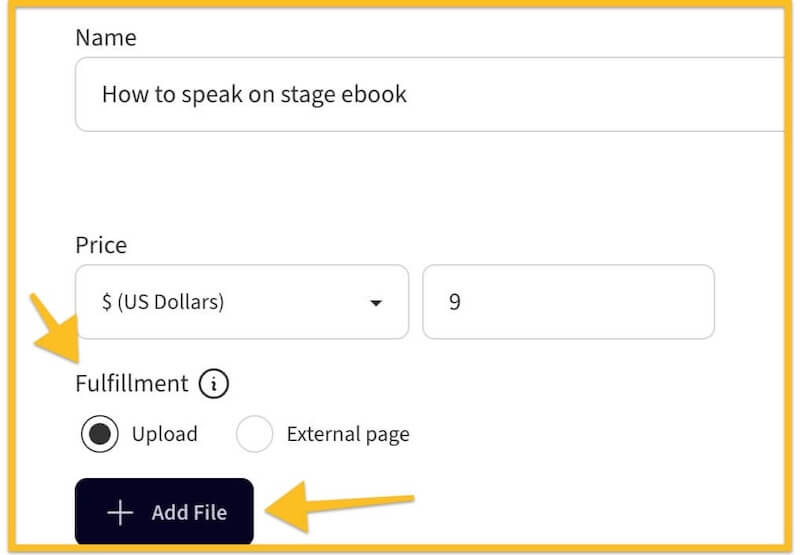
Need to add another file/download? Just click “Add File” again.
Step 2: There’s no step 2
Were you expecting more steps?
Nope, that’s really all there is to it. Most people finish this in less than a minute.
Your digital product files are now protected and ready to sell.
–
Here’s the best part – CartMango works like a security guard for your downloads.
When someone tries to open your download page:
If they bought your product: They get immediate access
If they didn’t buy: They’ll need a one-time-password (OYP) that’s only sent to paying customers’ emails.
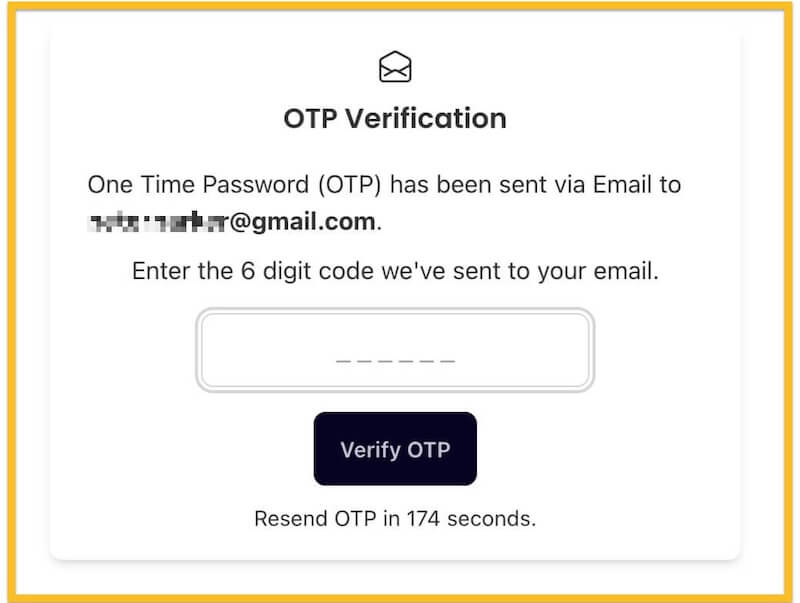
This simple system stops people from sharing your download links with friends or posting them online. Only the people who actually paid you will be able to download your stuff. No complicated setup needed.
CartMango is currently free through 2025, making it a great option for creators who want good protection but don’t want to spend a lot of time setting up complex systems.
–
TL;DR
Protecting your digital downloads is necessary in today’s online marketplace, but it doesn’t have to be overwhelming. The most successful protection strategies balance security with customer experience, discouraging piracy without punishing your paying customers.
Remember that perfect security is impossible, but making unauthorized sharing difficult enough is achievable. Your goal should be making piracy inconvenient enough that most people choose to purchase legitimately instead.
For most digital creators, a simple, thoughtful approach beats maximum security. Consider simple and fast solutions like CartMango that handle protection automatically while you focus on creating and marketing great products.
Related Reading
- SendOwl vs Gumroad: The Recurring Revenue Black Hole (2026)
- Gumroad vs Sellfy: The Vendor Lock-in Cage (2025)
- Gumroad vs Payhip: The Hidden Trap for Creators (2025)
- ThriveCart vs SamCart – The Subscription Hostage Trap (2025)
- 8 ThriveCart Alternatives & The Lifetime Pricing Paradox (2025)
- 8 SamCart alternatives + Subscription hostage (2025)
- The GENTLE Method: Soft marketing for creators
- How Far in Advance Should You Promote a Webinar?
- The SAVINGS Method: The Productivity Improvement Plan for Creators
- 9 Questions to Ask: How to Hire a Digital Marketing Agency
